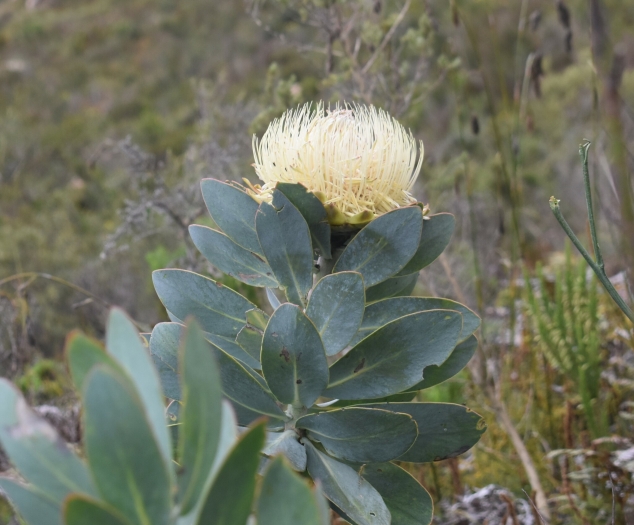Wagon Tree
(Protea nitida)
Wagon Tree (Protea nitida)
/
/

Justin Ponder
CC BY 4.0
Image By:
Justin Ponder
Recorded By:
Copyright:
CC BY 4.0
Copyright Notice:
Photo by: Justin Ponder | License Type: CC BY 4.0 | License URL: http://creativecommons.org/licenses/by/4.0/ | Rights Holder: Justin Ponder | Publisher: iNaturalist | Date Created: 2023-06-09T16:53:09-07:00 |

























Estimated Native Range
Summary
Protea nitida, commonly known as wagon tree or waboom, is a slow-growing evergreen tree native to the fynbos biome, which includes shrublands and heathlands in South Africa. It is particularly adapted to nutrient-poor soils and is found on rocky slopes and mountainous areas. This species can reach up to 33 feet in height with a trunk diameter of 3.3 feet. It features thick, white-grey bark and oblong to elliptic, leathery leaves that have a bluish sea-green hue. The large, showy, bisexual flower heads produce sweet nectar and are pollinated by birds and insects, with a peak flowering season in winter, although some flowers may be present year-round.
The wagon tree is valued for its ornamental flowers and its ability to thrive in poor soil conditions, making it suitable for cultivation in rock gardens and as a specimen tree in xeriscaping. It requires well-drained soil, moderate water, and full sun to part shade. While it is not commonly used in urban planting due to its size, it can be an attractive addition to larger landscapes. Protea nitida is not known for major disease problems, but it can be sensitive to root disturbance. It is potentially invasive in some parts of the world, so gardeners should check local regulations before planting.CC BY-SA 4.0
The wagon tree is valued for its ornamental flowers and its ability to thrive in poor soil conditions, making it suitable for cultivation in rock gardens and as a specimen tree in xeriscaping. It requires well-drained soil, moderate water, and full sun to part shade. While it is not commonly used in urban planting due to its size, it can be an attractive addition to larger landscapes. Protea nitida is not known for major disease problems, but it can be sensitive to root disturbance. It is potentially invasive in some parts of the world, so gardeners should check local regulations before planting.CC BY-SA 4.0
Plant Description
- Plant Type: Tree, Shrub
- Height: 15-33 feet
- Width: 10-20 feet
- Growth Rate: Slow
- Flower Color: Cream
- Flowering Season: Winter, Spring
- Leaf Retention: Evergreen
Growth Requirements
- Sun: Full Sun
- Water: Low
- Drainage: Medium, Fast
Common Uses
Bird Garden, Drought Tolerant, Erosion Control, Fire Resistant, Showy Flowers
Natural Habitat
Fynbos biome, including shrublands and heathlands in South Africa
Other Names
Common Names: Tree Protea, Waboom, Waggon Tree
Scientific Names: , Protea nitida, Erodendrum angustum, Erodendrum grandiflorum, Protea arborea, Protea grandiflora, Protea laurifolia, Protea laurifolia, Protea marginata, Scolymocephalus nitidus,
GBIF Accepted Name: